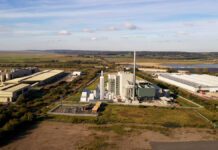In recent months, NASA has provided details about a mission to descend through the layered atmosphere of Venus in mid-2031, painting a detailed picture of the chemistry of the latter, going on to land in a mountainous region of the planet.

The DAVINCI mission will measure the chemistry of the planet’s environment in more detail than anything so far attempted.
The mission – titled Deep Atmosphere Venus Investigation of Noble gases, Chemistry, and Imaging (DAVINCI) – will be the first to study Venus using both spacecraft flybys and a descent probe.
In practice it amounts to a flying analytical chemistry laboratory, which will measure critical aspects of Venus’ massive atmosphere-climate system for the first time, many of which have been measurement goals since the early 1980s.
It will also provide the first descent imaging of the mountainous highlands of Venus while mapping their rock composition and surface relief at scales not possible from orbit. The mission supports measurements of undiscovered gases present in small amounts and the deepest atmosphere, including the key ratio of hydrogen isotopes. It is hoped this will help reveal the history of water on the planet, either as liquid water oceans or steam within the early atmosphere.
On board instruments
The mission’s carrier, relay and imaging spacecraft (CRIS) has two onboard instruments that will study the planet’s clouds and map its highland areas during flybys of Venus and will also drop a small descent probe with five instruments that will provide a medley of new measurements at very high precision during its descent to the hellish Venus surface.
Among the instruments on board will be a miniature sensor built by students, the Venus Oxygen Fugacity (VfOx) instrument, which will be mounted on the outside of the descent probe.
When the probe is approaching the planet’s surface, it will measure the partial pressure of oxygen, or oxygen fugacity, in the deep atmosphere. This information can be compared with measurements of oxygen from rocks on Venus’ surface to better understand the planet’s mountainous terrain, which has never been visited by a spacecraft.
Analysis of these VfOx measurements will make it possible to identify what minerals are most stable at the surface of Venus in the highlands, and “link the formation of rocks to their recent modification histories,” according to a NASA statement reported by space.com.
Measurement of the amount of oxygen present near the planet’s surface will provide “a ‘fingerprint’ of the rock-atmosphere reactions that are going on today,” said a statement.
The nightmarishly corrosive and furnace-like interior of the planet presents unusual demands in terms of ruggedness, and the Vfox sensor will be made of ceramic.
“This ensemble of chemistry, environmental, and descent imaging data will paint a picture of the layered Venus atmosphere and how it interacts with the surface in the mountains of Alpha Regio, which is twice the size of Texas,” said Jim Garvin, lead author of the paper in the Planetary Science Journal. “These measurements will allow us to evaluate historical aspects of the atmosphere as well as detect special rock types at the surface such as granites while also looking for tell-tale landscape features that could tell us about erosion or other formational processes.”
DAVINCI will make use of three Venus gravity assists, which save fuel by using the planet’s gravity to change the speed and/or direction of the CRIS flight system. The first two will set CRIS up for a Venus flyby to perform remote sensing in the ultraviolet and the near infrared light, acquiring over 60 gigabits of new data about the atmosphere and surface. The third Venus gravity assist will set up the spacecraft to release the probe for entry, descent, science, and touchdown, plus follow-on transmission to Earth.
The first flyby of Venus will be six and half months after launch and it will take two years to get the probe into position for entry into the atmosphere over Alpha Regio under ideal lighting at “high noon,” with the goal of measuring the landscapes of Venus.
Once the CRIS system is about two days away from Venus, the probe flight system will be released along with the titanium 1-meter diameter probe safely encased inside. The probe will begin to interact with the Venus upper atmosphere at about 120 km above the surface.
The science probe will commence science observations after jettisoning its heat shield around 67 km above the surface. With the heatshield jettisoned, the probe’s inlets will ingest atmospheric gas samples for detailed chemistry measurements of the sort that have been made on Mars with the Curiosity rover. During its hour-long descent to the surface, the probe will also acquire hundreds of images as soon as it emerges under the clouds at around 30,500 m above the local surface.
Touching down
“The probe will touch-down in the Alpha Regio mountains but is not required to operate once it lands, as all of the required science data will be taken before reaching the surface.” said Stephanie Getty of NASA. “If we survive the touchdown at about 25 miles per hour, we could have up to 17-18 minutes of operations on the surface under ideal conditions.”






